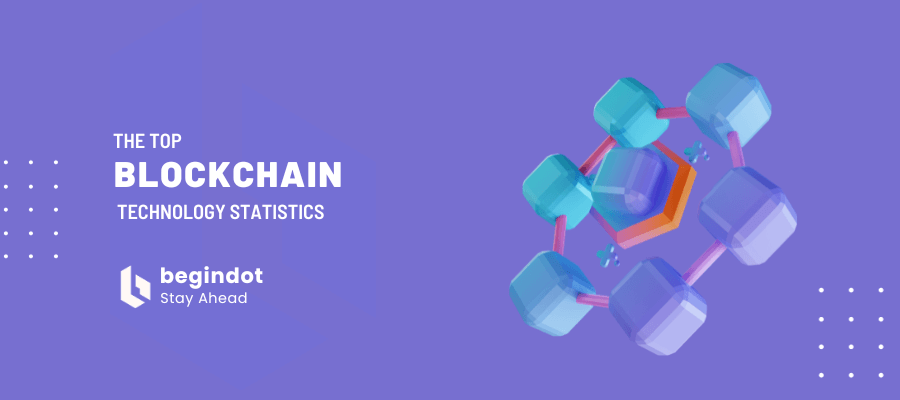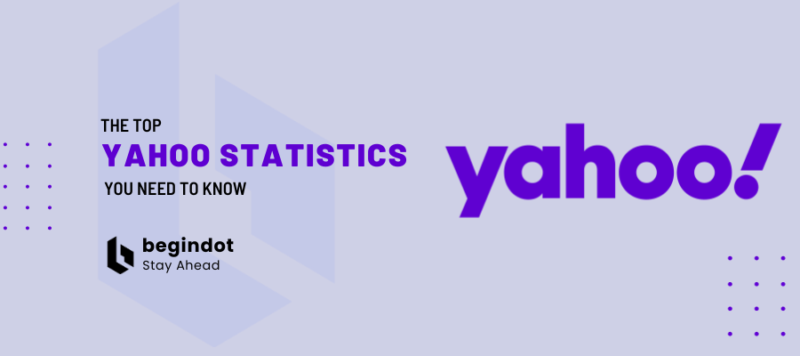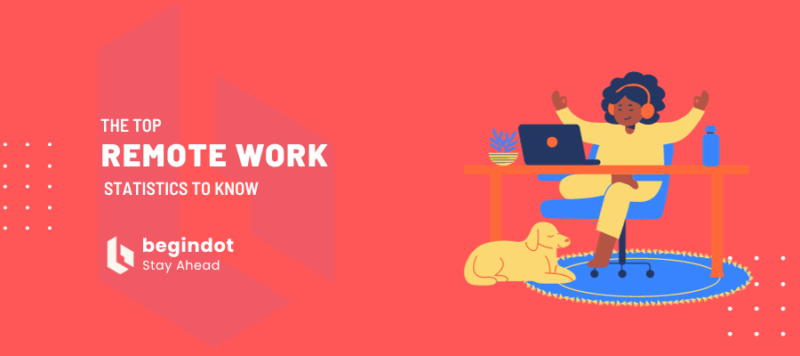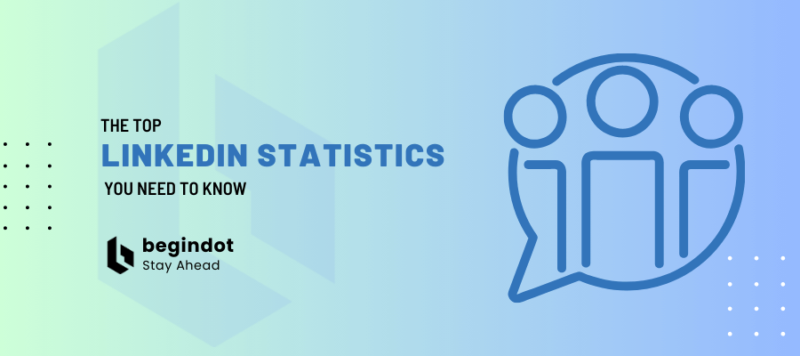Are you looking for the top blockchain statistics? Well, we have listed the important statistics around blockchain technology that you need to know.
A blockchain is a digital ledger of all cryptocurrency transactions. It is constantly growing as “completed” blocks are added to it with a new set of recordings. Each block contains a cryptographic hash of the previous block, a timestamp, and transaction data.
Bitcoin nodes use the blockchain to differentiate legitimate Bitcoin transactions from attempts to re-spend coins that have already been spent elsewhere.
The blockchain is an essential part of the cryptocurrency ecosystem, serving as a public ledger of all transaction data.
Because it is distributed across a peer-to-peer network, there is no central authority that can be compromised or corrupted. This makes it an ideal solution for trustless applications like cryptocurrency.
While the original blockchain was created for Bitcoin, other cryptocurrencies have since implemented their own blockchains. Ethereum, for example, uses a blockchain to store data about smart contracts.
These contracts can be used to create decentralized applications (dapps) that run on the Ethereum network.
The use of blockchains is not limited to cryptocurrencies. Any application that needs to store data in a secure, tamper-proof way can make use of a blockchain. This makes blockchains a potentially disruptive technology with a wide range of applications.
Let’s have a look at the top blockchain statistics below.
1. The finance sector accounts for more than 60% of the global blockchain value.
According to Statista, the finance sector is currently the most prominent blockchain industry, with a 63.4% share of the total market value. The healthcare sector ranks second, followed by the government, public, and manufacturing and retail industries.
2. Till 2018, around 90% of the US and European financial bodies had started planning to adopt blockchain.
According to Deloitte reports, as of June 2018, around 90% of organizations in the US and Europe have started investigating how they could incorporate blockchain into their business operations.
Moreover, nearly 50% of these organizations have already begun to pilot projects or are in the process of implementing blockchain technology.
3. The transaction cost of using blockchain is millions of times cheaper than traditional methods.
According to reports, the transaction cost of using blockchain technology is only a few hundredths of a penny, while the traditional method costs between 2 and 20 cents. It means that blockchain is millions of times cheaper than the conventional system.
4. Blockchain can reduce the finance infrastructure costs by around 30%
According to Accenture, blockchain technology can potentially reduce infrastructure costs for the global financial industry by up to 30%. It would be a collective saving of around $20 billion per year. It’s a huge potential saving for a sector always looking to reduce costs.
5. Blockchain market annual revenue will surge to $20 billion by 2024
According to Global News Wire, the blockchain market is expected to grow from $3.0 billion in 2020 to $20.0 billion by 2024, at a Compound Annual Growth Rate (CAGR) of 67.3% during the forecast period. It significantly increased from the $1.2 billion market value in 2018.
6. Around 86% of tech teams believe blockchain offers vast business potential.
According to Deloitte, 86% of respondents from their global blockchain survey said they believe blockchain technology has a “huge business potential” and is likely to significantly impact their industry and sector in the next three years.
7. According to a survey, 24% of companies said they would invest from $5 million to $10 million in blockchain in 2021 and beyond.
According to Deloitte, 24% of companies said they would invest between $5 million and $10 million in blockchain technology in 2021. The survey also found that 15% of respondents said they would invest more than $10 million.
8. More food companies will jump into blockchain integration in the upcoming time.
According to reports, food companies such as Nestlé, Dole, Tyson Foods, and Walmart are already using blockchain to track food items throughout the supply chain. In the next few years, it is expected that more food companies will join the trend.
9. The global blockchain market cap in the agriculture domain will reach $1.4 billion in 2028
According to reports, the blockchain market cap in the agricultural domain is expected to reach $1.4 billion by 2028. The main reason for this growth is the increasing demand for transparency and traceability in the food supply chain.
10. Assets worth more than $270 billion are distributed in blockchain transactions.
According to reports, there is more than $270 billion in value locked up in blockchain technology as of 2020. This number is expected to grow exponentially in the coming years as more businesses adopt the technology.
11. Around 33% of consumer products companies have implemented blockchain technology.
According to reports, around 33% of consumer product companies have already implemented blockchain technology as of 2021. It is a significant increase from the 22% reported to have done so in 2018.
Moreover, the trend is expected to continue, with 43% of companies planning to implement blockchain by 2023.
12. Steemit is the most popular blockchain-based social media network.
Steemit is currently the most popular blockchain-based social media network. The platform has more than 1 million active users and is growing steadily. In addition, Steemit is also one of the most censorship-resistant platforms on the internet.
13. As of December 2020, there are over 63,000,000 blockchain wallet users.
According to reports, as of December 2020, there are over 63 million blockchain wallet users. It is a significant increase from the previous year when there were only 35 million users. Furthermore, the trend is expected to continue, with an estimated 75 million users by 2025.
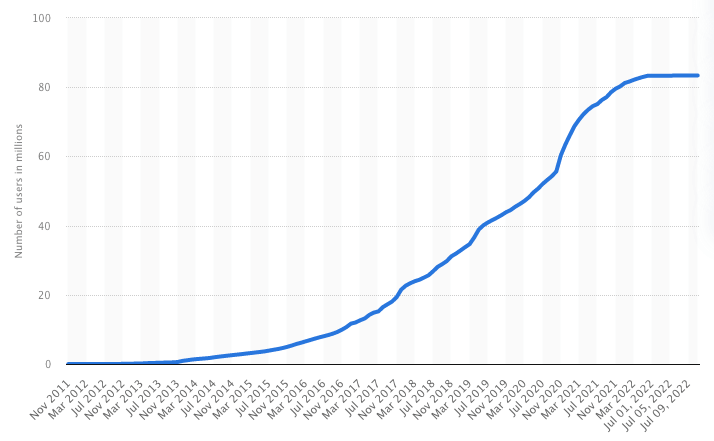
14. Around 15% of IT professionals have invested in cryptocurrencies.
According to reports, as of 2021, around 15% of IT professionals have invested in cryptocurrencies. It is a significant increase from the 5% reported to have done so in 2017.
Moreover, the trend is expected to continue, with 30% of IT professionals planning to invest in cryptocurrencies by 2025.
15. Blockchain investment went up by around 280% in the first three quarters of 2018
According to reports, blockchain investment increased by around 280% in the first three quarters of 2018. As a result, the total blockchain venture capital invested in Q1-Q3 2018 was $4.1 billion compared to $1.1 billion in 2017.
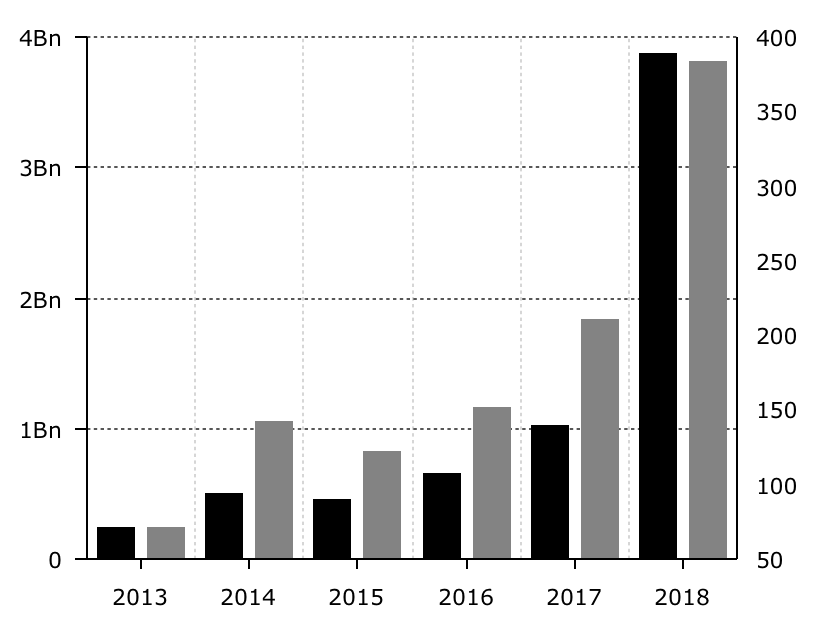
16. The future of blockchain growth will be driven by DApps, STOs, and the gaming industry.
According to reports, the future of blockchain will be driven by decentralized applications (DApps), security token offerings (STOs), and the gaming industry.
As a result, these three sectors are expected to experience the highest growth rates in the coming years.
17. Currently, regulations, collaboration, and interoperability are the most significant issues in blockchain mainstream implementation.
According to reports, blockchain technology’s three most significant issues are regulations, collaboration, and interoperability.
Regulations are a primary concern for companies looking to implement blockchain because the technology is still new, and there are no clear guidelines on how to use it. Collaboration is also a challenge because different companies have different standards and protocols.
18. IBM has over 1,500 professionals working on 500+ blockchain projects
According to reports, IBM has over 1,500 professionals working on 500+ blockchain projects.
The company is also a member of the Hyperledger Project, an open-source collaborative effort created to advance cross-industry blockchain technologies.
19. By 2025, the spending of America on blockchain will touch $41 billion.
According to reports, America is expected to spend $41 billion on blockchain by 2025. It would represent a five-year compound annual growth rate (CAGR) of 60.2%.
The healthcare sector is expected to see the highest level of spending, followed by the banking sector and then the government sector.
20. Blockchain projects will add a value worth $360 billion to business sectors by 2026
According to reports, blockchain projects are expected to add a value of $360 billion to business sectors by 2026. It is a significant increase from the $2.9 billion added in 2019.
21. Around 44% of gamers have traded or purchased gaming items using blockchain platforms.
According to reports, around 44% of gamers have traded or purchased gaming items using blockchain platforms. It is a significant increase from the 28% reported to have done so in 2018.
Furthermore, the trend is expected to continue, with 58% of gamers planning to use blockchain for gaming by 2023.
22. Some of the largest global banks are investing $50 billion to create blockchain-based digital cash settlement advancements.
According to reports, some of the largest global banks are investing $50 billion to create blockchain-based digital cash settlement advancements.
The move is expected to reduce the time it takes for cross-border payments to settle from days to hours.
23. The global healthcare market will spend $5.61 billion on blockchain by 2025
According to reports, the global healthcare market will reach $5.61 billion by 2025, growing at a compound annual growth rate (CAGR) of 71.0%.
This growth is driven by the need to reduce costs, improve data security, and streamline clinical trials.
24. Currently, only 0.71% of the world population is using blockchain technology.
According to reports, as of 2021, only 0.71% of the world population is using blockchain technology.
However, this number is expected to increase in the coming years as more and more people become aware of the potential benefits of this technology.
25. Bitcoin’s electricity consumption generates carbon emissions equal to countries like Sri Lanka or Jordan.
According to reports, Bitcoin’s electricity consumption generates carbon emissions equal to countries like Sri Lanka or Jordan. The report further stated that bitcoin uses 150 terawatt-hours of electricity annually.
26. The current size of the Bitcoin blockchain is around 324 gigabytes.
According to reports, the current size of the Bitcoin blockchain is around 324 gigabytes. It is a significant increase from the previous year when the size was about 100 gigabytes.
27. Financial bodies can save up to $12 billion annually from using blockchain.
According to reports, financial institutions could save up to $12 billion annually by using blockchain. The main areas of savings would be in cross-border payments, trade finance, and compliance.
28. Around 20% of IoT devices had some implementation of blockchain services in 2020
According to reports, around 20% of all Internet of Things (IoT) devices had some implementation of blockchain services in 2020. It is a significant increase from the 5% reported to have done so in 2017.
29. The global blockchain market size will grow at a CAGR of 69% between 2019 and 2025
According to reports, the global blockchain market is expected to grow from USD 3.0 billion in 2019 to USD 39.7 billion by 2025, at a CAGR of 69.3% during the forecast period.
30. The transaction rate per second on the blockchain is 2.58 as of June 2021
According to reports, the blockchain’s transaction rate per second (TPS) was 2.58 as of June 2021. It is a significant increase from the 1.07 TPS in January 2021 and is expected to continue to grow in the coming years.
Top Sources:
Also don’t miss:
FAQs About Blockchain
What is a blockchain?
A blockchain is a distributed database that stores records of digital transactions. Transactions are grouped into “blocks” and each block is chained to the previous block, creating a permanent record of all transactions. Blockchain technology is used to create and manage public ledger systems, such as Bitcoin’s blockchain.
How does a blockchain work?
Blocks on a blockchain are permanently chained together. Each block contains a cryptographic hash of the previous block, a timestamp, and transaction data. Bitcoin nodes validate new blocks by computing the hash and checking that it is less than a target value. Once a block is validated, it can be added to the end of the chain and all nodes will update their blockchain to include the new block.
What is a distributed ledger?
A distributed ledger is a database that is spread across a network of computers. Blockchain technology is one type of distributed ledger. With blockchain, each node in the network has a copy of the entire blockchain. This allows for transparent and secure record-keeping.
What are the benefits of blockchain technology?
Some of the benefits of blockchain technology include increased security, immutability, and transparency. Blockchain technology can also help reduce costs and speed up transactions.
What is a digital asset?
A digital asset is a type of asset that exists in digital form. Bitcoin is one example of a digital asset. Other types of digital assets include cryptocurrencies, tokens, and smart contracts.
What is a cryptocurrency?
A cryptocurrency is a type of digital asset that uses cryptography to secure its transactions and to control the creation of new units. Bitcoin is the first and most well-known cryptocurrency. Cryptocurrencies are decentralized, meaning they are not subject to government or financial institution control.
What is a token?
A token is a type of digital asset that can be used to represent ownership or access to a service. Tokens are often issued on blockchain platforms and can be used to purchase goods or services.
What is a smart contract?
A smart contract is a type of digital contract that is stored on a blockchain. Smart contracts are self-executing, meaning they will automatically execute the terms of the contract once certain conditions are met.
What is a distributed application?
A distributed application (DApp) is a type of software application that runs on a decentralized network. DApps often use blockchain technology and can be built on top of existing blockchain platforms.

